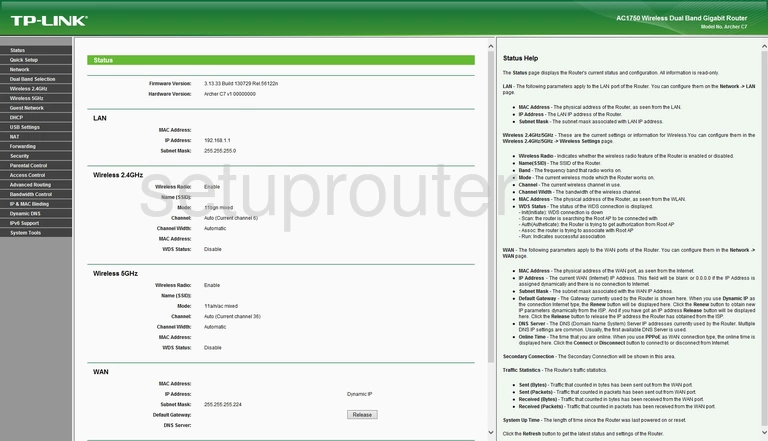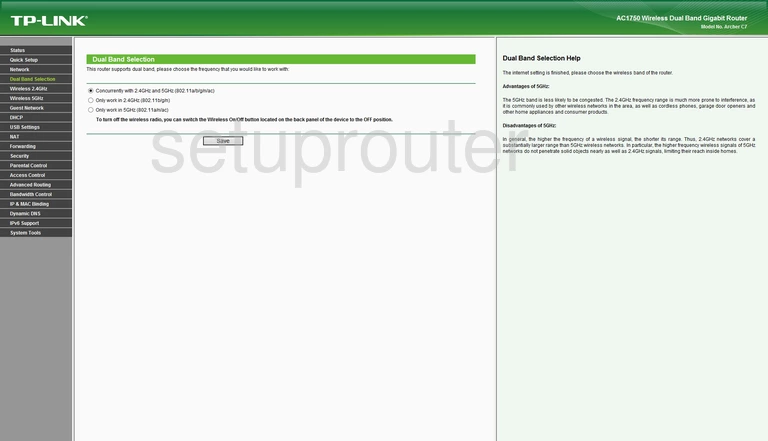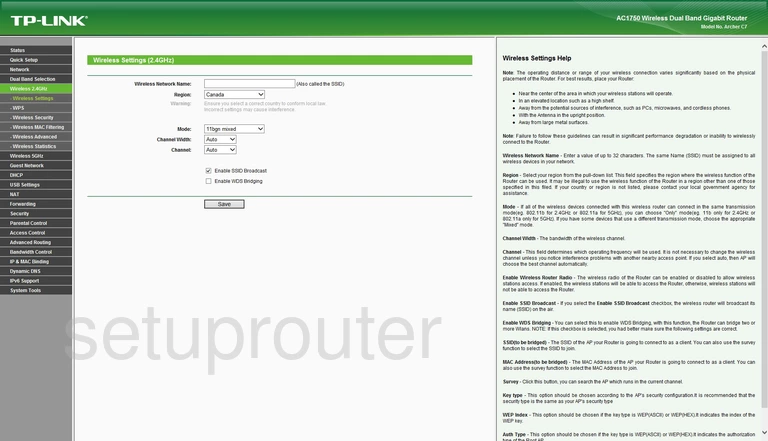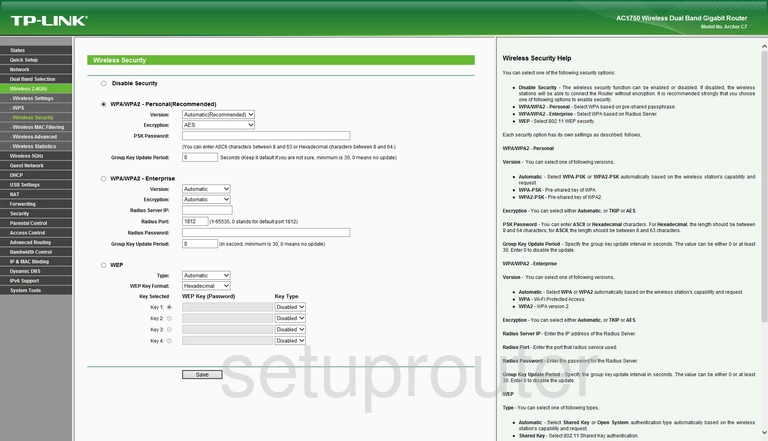The TP-Link AC1750 router is considered a wireless router because it offers WiFi connectivity. WiFi, or simply wireless, allows you to connect various devices to your router, such as wireless printers, smart televisions, and WiFi enabled smartphones.
Other TP-Link AC1750 Guides
This is the wifi guide for the TP-Link AC1750. We also have the following guides for the same router:
- TP-Link AC1750 - TP-Link AC1750 User Manual
- TP-Link AC1750 - How to change the IP Address on a TP-Link AC1750 router
- TP-Link AC1750 - TP-Link AC1750 Login Instructions
- TP-Link AC1750 - How to change the DNS settings on a TP-Link AC1750 router
- TP-Link AC1750 - TP-Link AC1750 Screenshots
- TP-Link AC1750 - Information About the TP-Link AC1750 Router
- TP-Link AC1750 - Reset the TP-Link AC1750
WiFi Terms
Before we get started there is a little bit of background info that you should be familiar with.
Wireless Name
Your wireless network needs to have a name to uniquely identify it from other wireless networks. If you are not sure what this means we have a guide explaining what a wireless name is that you can read for more information.
Wireless Password
An important part of securing your wireless network is choosing a strong password.
Wireless Channel
Picking a WiFi channel is not always a simple task. Be sure to read about WiFi channels before making the choice.
Encryption
You should almost definitely pick WPA2 for your networks encryption. If you are unsure, be sure to read our WEP vs WPA guide first.
Login To The TP-Link AC1750
To get started configuring the TP-Link AC1750 WiFi settings you need to login to your router. If you are already logged in you can skip this step.
To login to the TP-Link AC1750, follow our TP-Link AC1750 Login Guide.
Find the WiFi Settings on the TP-Link AC1750
If you followed our login guide above then you should see this screen.

This guide begins on the TP-Link AC1750's Status page. To setup the wireless options we recommend starting by clickng the link in the left sidebar labeled Dual Band Selection.
Change the WiFi Settings on the TP-Link AC1750

The changes we are making will be on 2.4GHz only so go ahead and click Only work in 2.4GHz (802.11b/g/n).
Save your changes.
Now back in the left sidebar click Wireless 2.4GHz and then Wireless Settings under that.

You should now be on a page very similar to the one you see here.
First, use the Wireless Network Name space to enter a new name for your network ID. This name can be anything you like. Our only recommendation is to avoid personal or router information. Learn more in our Wireless Name Guide.
If you need to change your Channel you will do so on this page. Open up the Channel menu and choose the appropriate channel for your network. We recommend that everyone use either channel 1,6, or 11. Find out why in this guide.
When you are finished, click the Save button.
Now go back to the left sidebar and select the link under Wireless 2.4GHz titled Wireless Security.

This directs you to the page you see here.
First, tick the radio button labeled WPA/WPA2 - Personal(Recommended).
Second, use the Version drop down list to choose WPA2 as the security level you want to use. To learn more, check out this guide.
Set the Encryption to AES.
The last setting you need to change is titled the PSK Password. This is the internet password and should be strong. Use no less than 14 characters. Try adding some symbols, and numbers to this new password for strength. More ideas can be found in this guide.
That's it, just click the Save button before you exit.
Possible Problems when Changing your WiFi Settings
After making these changes to your router you will almost definitely have to reconnect any previously connected devices. This is usually done at the device itself and not at your computer.
Other TP-Link AC1750 Info
Don't forget about our other TP-Link AC1750 info that you might be interested in.
This is the wifi guide for the TP-Link AC1750. We also have the following guides for the same router:
- TP-Link AC1750 - TP-Link AC1750 User Manual
- TP-Link AC1750 - How to change the IP Address on a TP-Link AC1750 router
- TP-Link AC1750 - TP-Link AC1750 Login Instructions
- TP-Link AC1750 - How to change the DNS settings on a TP-Link AC1750 router
- TP-Link AC1750 - TP-Link AC1750 Screenshots
- TP-Link AC1750 - Information About the TP-Link AC1750 Router
- TP-Link AC1750 - Reset the TP-Link AC1750